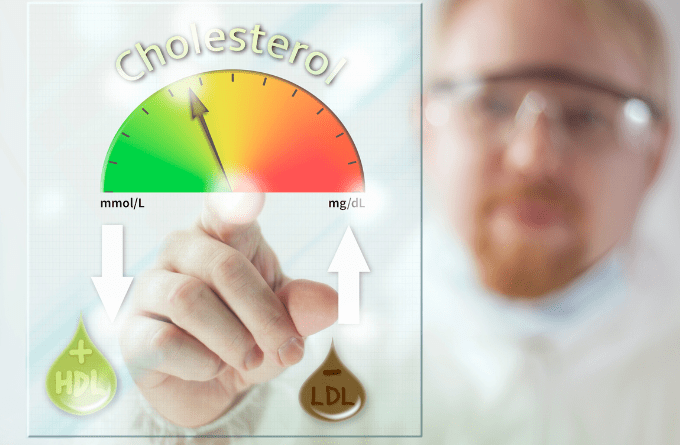
“Does Fried Chicken Raise Blood Sugar?” Uncover the truth and explore healthier meal options in this informative article.
Introduction
When delving into the intricate relationship between our dietary choices and health outcomes, a pivotal question emerges: Does indulging in fried chicken trigger spikes in blood sugar levels? In a culinary landscape brimming with deep-fried delicacies and a growing emphasis on blood sugar management, comprehending the potential connection between fried chicken and blood sugar fluctuations takes center stage. This article embarks on an illuminating journey to dissect the impact of fried chicken on blood sugar, dissect its nutritional composition, and unveil alternatives catering to individuals striving to maintain optimal blood sugar levels.
Embarking on Blood Sugar Basics
Before plunging into the nuanced realm of fried chicken’s interaction with blood sugar, let’s first navigate the intricacies of blood sugar itself. Also known as blood glucose, blood sugar stands as a vital form of energy coursing through our bloodstream, fueling the diverse cellular activities of our bodies. The equilibrium of blood sugar levels emerges as a pivotal facet of overall well-being, given that deviations—be they soaring or plummeting—can herald a spectrum of health challenges.
Intriguing Insight
Did you know that the tantalizing crispness of fried chicken is a direct result of the Maillard reaction? This chemical interplay between amino acids and reducing sugars is accountable for the alluring golden hue and delectable flavor. Intriguingly, this same reaction can factor into elevated blood sugar levels when the carbohydrates within the batter undergo digestion, potentially leading to blood sugar spikes. Hence, the irresistible crunch of fried chicken unfurls against a backdrop of dietary considerations, particularly for those vigilant about blood sugar equilibrium.
Deciphering the Nutritional Tapestry of Fried Chicken
- Caloric Complexities: A customary serving of fried chicken, averaging around 3.5 ounces or 100 grams, can encompass a calorie range of 280 to 350. This variance hinges on variables such as the composition of the batter, the cooking method employed, and the dimensions of the cuts.
- Fat’s Intricacies: Fried chicken frequently boasts a substantial fat content, oscillating between 18 to 25 grams per serving. The frying process artfully coaxes oil absorption, thereby amplifying the overall fat quotient.
- Saturated Fat’s Tale: The saturated fat narrative within fried chicken is diverse, spanning from 4 to 7 grams per serving. Noteworthy due to their correlation with heightened heart disease risk, diets rich in saturated fats demand circumspection.
- Unpacking Trans Fat: The trans fat saga unfolds in accordance with the chosen oil and frying technique, potentially bestowing a measure of trans fats onto certain renditions of fried chicken. Recognized as undesirable fats, trans fats hold the capability to elevate harmful cholesterol levels.

5. Protein’s Resilience: Despite the conspicuous fat presence, fried chicken proffers a commendable protein content, typically resting at 20 to 25 grams per serving. Protein’s significance radiates through its role in tissue regeneration and diverse physiological functions.
6. Carbohydrates Under Scrutiny: Carbohydrates predominantly emanate from the batter, contributing to a carbohydrate span of 10 to 20 grams per serving. This influx of carbohydrates aligns with the potential to incite blood sugar spikes.
7. Sodium’s Role: The sodium tally in fried chicken can reach notable heights, often amounting to 600 to 800 milligrams per serving. The consumption of excessive sodium interlinks with hypertension and a medley of health concerns.
8. Nourishing Nuances: While certain vitamins and minerals emanate from the chicken’s composition, the frying process’s rigors can compromise their sustenance. Nevertheless, fried chicken may extend a measure of iron and B vitamins to discerning palates.
9. Lack of Fiber: Lamentably, fried chicken ranks low on the dietary fiber scale. The absence of dietary fiber can catalyze rapid digestion, conceivably paving the way for blood sugar surges.
10. Caloric Density Dynamics: Fried chicken, due to its caloric density, imparts a sizeable caloric yield in proportion to its modest serving size. This attribute ushers in the potential for unrestrained consumption to inadvertently precipitate overindulgence and ensuing weight gain.
Unlocking Knowledge
Embarking on the pathway to blood sugar management doesn't solely entail sidestepping fried chicken. A comprehension of the glycemic index (GI) serves as a beacon of wisdom. Foods endowed with a high GI tag are synonymous with brisk blood sugar elevation, while their low-GI counterparts usher in a more gradual rise. Given fried chicken's carbohydrate-infused coating, its affiliation with an elevated GI reinforces the prudence of portion control and judicious consumption, particularly for individuals grappling with diabetes.
Decoding the Role of Carbohydrates in Blood Sugar Dynamics
The batter enveloping fried chicken invariably harbors a notable carbohydrate constituency. Upon traversing the digestive pathway, these carbohydrates metamorphose into sugars, fomenting a brisk ascent in blood sugar levels. This escalation registers with heightened intensity in individuals grappling with diabetes or insulin resistance. Moreover, the frying process propels augmented oil absorption, thus culminating in an expanded caloric intake and a conceivable augmentation of blood sugar elevation.
Navigating the Terrain of Fried Chicken and Blood Sugar Elevation: The Glycemic Index Odyssey
Central to the discourse is the glycemic index (GI), a metrical tool gauging the rapidity with which specific foods propel blood sugar escalation. Foods occupying the high rungs of the GI spectrum hasten metabolic processes, inducing swift blood sugar spikes. In the context of fried chicken, characterized by a carbohydrate-rich batter, a propensity toward an elevated GI looms large, thereby paving the way for blood sugar fluctuations soon after ingestion.
Assessing Differential Responses
Recognizing the diversity inherent to human physiology, it becomes imperative to acknowledge the disparity in fried chicken’s impact on blood sugar levels across distinct individuals. The interplay of factors such as metabolic velocity, insulin responsiveness, and overarching dietary inclinations contributes to a kaleidoscope of bodily responses to fried foods. This diversity culminates in a caveat for individuals managing diabetes or pre-diabetic conditions, highlighting the necessity of measured consideration while contemplating fried chicken consumption.

Navigating Healthier Pathways
Acknowledging the latent health implications associated with fried chicken consumption, this discourse concurrently ushers in an exploration of alternatives attuned to health-conscious preferences. For those yearning to savor the delectable flavors sans the specter of blood sugar tumult, consider these judicious pathways:
The Allure of Grilled Chicken
Opting for grilled chicken heralds a discerning choice. Endowed with a profile replete with lean protein, grilled chicken extends the sensory gratification synonymous with fried chicken, while circumventing the carbohydrate glut and unsavory fats. Grilling’s artistry lies in its ability to retain the innate succulence of the chicken, even as it curtails the caloric deluge.
Baked Chicken’s Temptation
The path of baked chicken adorned with a meticulously seasoned crust presents an enticing compromise. This culinary trajectory engenders a texture akin to its fried counterpart, all without necessitating the deep-frying ritual. This avenue encapsulates moisture retention, thereby minimizing oil incorporation—a felicitous choice for those attuned to blood sugar moderation.
Pondering Healthier Options
The pursuit of blood sugar equilibrium while savoring the gustatory charm of fried chicken beckons the exploration of alternatives. Consider the allure of grilled chicken—abundant in lean protein and rivalling the savory satisfaction of its fried counterpart, minus the carbohydrate avalanche and undesirable fats. Baked chicken, adorned with a meticulously seasoned crust, offers a harmonious middle ground, conferring texture akin to fried chicken sans the submersion in oil. Through these adept substitutions, relishing the preferred flavors seamlessly converges with the goal of meticulous blood sugar stewardship.
Conclusion. Does Fried Chicken Raise Blood Sugar?
In our quest to decipher the multifaceted interplay between fried chicken and blood sugar dynamics, we’ve embarked on a journey steeped in enlightenment. The resonant appeal of fried chicken, characterized by its tantalizing crunch and savory demeanor, unfolds against the backdrop of blood sugar fluctuations—particularly pertinent within the orbit of diabetes or pre-diabetic susceptibilities. The enigmatic inquiry—”Does fried chicken raise blood sugar?”—no longer shrouds itself in obscurity; armed with knowledge, we emerge equipped to navigate culinary choices informed by discernment.
The nutritional tableau of fried chicken, governed by its carbohydrate-draped batter and its concomitant frying expedition, sketches a vivid portrayal of the propensity for brisk blood sugar surges soon after consumption. As the glycemic index—an arbiter of swiftness in blood sugar elevation—commingles with the narrative, moderation acquires paramount significance, especially among those contending with blood sugar governance. Though the response to fried chicken’s influence is as diverse as humanity itself, the prudence of those contending with diabetes or pre-diabetic predilections mandates circumspect deliberation.

However, this journey through the avenues of health-consciousness isn’t bereft of hope for enthusiasts of fried chicken. In unison with the revelation of the potential intricacies borne by fried chicken, a pantheon of alternatives beckon. These alternatives—beckoning under the banners of grilled or baked chicken—bestow the indulgence of taste without exacting the toll on blood sugar stability. In the world of flavors and health, these alternatives fuse the best of both realms.
The tapestry of nutritional insights woven through the discourse—a medley of saturated fats, carbohydrates’ role, and the profound possibility of contributing to weight fluctuations—catalyzes an appreciation for temperance and prudent culinary plotting. As we traverse the terrain of our dietary choices, our endeavors are imbued with the potential to commandeer our health voyage.
Interface with Insulin Resistance
The narrative of fried chicken's interplay with blood sugar assumes heightened gravity for those encountering insulin resistance—a condition where insulin efficacy falters, consequently escalating blood sugar levels. The swiftness of blood sugar elevation intertwined with fried chicken can exacerbate this circumstance. Thus, individuals navigating the terrain of insulin resistance are advised to gravitate toward the folds of grilled or baked chicken, fostering a more measured blood sugar journey.
FAQs: Does Fried Chicken Raise Blood Sugar?
- Q1: Does fried chicken raise blood sugar levels?
A1: Indeed, due to the carbohydrate-rich nature of its batter and the ensuing frying process, fried chicken can potentially precipitate swift blood sugar spikes. - Q2: What’s the glycemic index (GI) and its correlation with fried chicken?
A2: The GI stands as a yardstick gauging the alacrity with which a food item provokes blood sugar elevation. Given the carbohydrate-rich batter of fried chicken, a higher GI is plausible, potentially manifesting as prompt blood sugar surges post-consumption. - Q3: Is the impact of fried chicken uniform across individuals?
A3: Notably, the consequences can diverge among individuals, contingent upon metabolism, insulin sensitivity, and dietary habits. For those with diabetes or pre-diabetes, judicious consumption is paramount due to the prospect of significant blood sugar oscillations. - Q4: Can one revel in fried chicken despite diabetes?
A4: Occasional indulgence in moderation might be admissible. Nonetheless, more prudent options, like grilled or baked chicken, offer a means of better blood sugar control. - Q5: How does the frying process contribute to blood sugar elevation?
A5: The frying process accentuates oil absorption, thereby amassing calories and hastening carbohydrate digestion, which in turn could propel blood sugar spikes. - Q6: What does this mean for those with diabetes or pre-diabetes?
A6: Those treading the terrain of diabetes or pre-diabetes should exert vigilance while embracing fried chicken, given the potential for considerable blood sugar fluctuations. Alternative choices warrant exploration. - Q7: What role do carbohydrates play in blood sugar dynamics?
A7: Carbohydrates within the batter can transform into sugars during digestion, ushering in rapid blood sugar escalations. - Q8: What other nutritional aspects deserve attention with fried chicken?
A8: Significance beckons towards saturated and trans fats, along with sodium. These entities hold sway over heart health and general well-being. - Q9: Can seasonings moderate fried chicken’s blood sugar impact?
A9: While not a panacea, certain seasonings, such as cinnamon and turmeric, may mildly influence blood sugar regulation. - Q10: How does one strike a balance between fried chicken and health?
A10: The path forward entails education about fried food’s nutritional composition, mindful consideration of individual health dynamics, and the integration of healthier alternatives where feasible.
Harmonizing Pleasure and Well-being
The expedition through fried chicken's nuances in relation to blood sugar pulsates with the rhythm of harmony—a rhythmic coalescence of pleasure and health. The goal isn't to forsake this culinary delight entirely, but to stride forward armed with cognizance of its potential effects. Informed choices, anchored in awareness, serve as the bridge between the enticement of fried chicken and the realm of wellness. As the next crispy craving beckons, remember that understanding the interplay unfurls the opportunity to relish with wisdom, forging an equilibrium between palate satisfaction and health aspirations.






